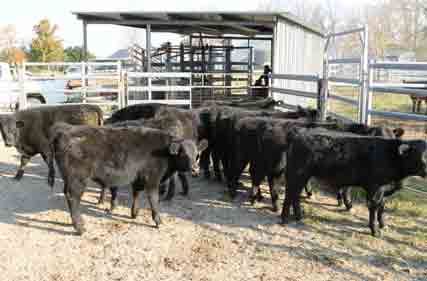 Max Newsome, Northern Tablelands Local Land Services Livestock Officer
Max Newsome, Northern Tablelands Local Land Services Livestock Officer
The strength of the weaner cattle market continues across eastern Australia. The Eastern Young Cattle Indicator (EYCI) is currently sitting around 1,100 c/kg, so it is critical to look after this valuable investment.
Autumn signals the change in growth from summer pasture species to temperate. Now is a great time to assess your pasture composition to see which temperate and/or tropical species are present. This assessment will help determine your management approach for weaner cattle.
Getting out of the ute and down into the pasture, below the bulk of dry standing feed, will let you identify new growth coming though. Examining a few sites, in a straight line across the paddock (such as the step point assessment), will provide a good representation.
Where there are large areas of summer pasture species, consider what supplementation or forage options are available for weaned cattle.
Remember energy is king and that protein often follows energy levels.
Oats have long been the staple winter forage crop in the Northern Tablelands, but it is important to remember that a good pasture may achieve the same weight gains. Continuous grazing of oats may be better for fattening stock than rotational grazing oats and pasture combined.
Adequate plant material must be maintained to give continuous and quick regrowth. Stocking densities need to be balanced with crop growth rates to ensure the feed on offer is not being significantly depleted, for example, a sustained stocking rate of 2.4 head of 350 kg steers/ha (assuming 25% spoilage and 30kg dry matter/ha/day growth).
Pre and post weaning management will help ensure successful future breeders and/or carcases are produced. Future carcase and fattening patterns can be influenced if feed is restricted around the weaning period.
The benefits from yard weaning for feeder cattle are well documented. Research conducted by NSW Agriculture and Beef CRC has shown that yard weaned cattle perform better in a feedlot environment, as well as reducing the chances of respiratory disease. Another benefit is the added human interactions whilst in the yard.
Consider keeping weaners yarded overnight for several days, with access to secure adjacent holding paddocks throughout the day. Feed a good quality hay or silage ad lib.
Care should be taken with wet conditions as the yards will become muddy. This can increase the chance of some diseases including foot abscesses. This should be closely monitored.
A good animal health protocol needs to be in place. Practices include:
- booster or first vaccinations for reproductive and clostridial diseases
- external parasite control
- internal parasite control
- assess trace elements (cases of selenium have been seen across the Northern Tablelands this year making it worthwhile chatting to an advisor to find out if this is impacting production in your cattle).
Though cattle can tolerate a higher worm burden than sheep, worms can still impact cattle production. There are several ways to set up a weaning paddock:
- pasture spelling, though this is not always practical
- grazing the paddock with sheep (cross species grazing)
- grazing the mature cattle, which are more resistant to worms and therefore shed less worm eggs on the pasture
- separate trade cattle from replacement heifers. Replacement females and trade cattle generally have different production targets and should be managed accordingly.
For further information, visit the Meat & Livestock Australia, NSW Department of Primary Industries and Local Land Services websites or contact your Local Land Services Livestock Officer on 1300 795 299.
-Local Land Services
